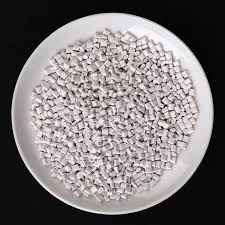Chemical Technologies in Water Treatment Innovations and Applications
Water, the cornerstone of life, is an essential resource that needs to be preserved and purified for human consumption, agriculture, and industrial use. The increasing population growth, urbanization, and industrial activities have significantly strained water resources, making efficient water treatment technologies more critical than ever. Chemical water treatment is a holistic approach that involves various techniques and innovations aimed at ensuring water quality and safety. This article explores some of the most prominent chemical technologies used in water treatment and their implications for environmental sustainability.
Key Chemical Treatment Processes
1. Coagulation and Flocculation These are among the first steps in many water treatment processes. Coagulants such as aluminum sulfate and iron (III) chloride are added to raw water to destabilize suspended particles, allowing them to clump together. This process, termed flocculation, forms larger aggregates known as flocs, which can then be easily removed through sedimentation or filtration. The efficiency of this process can significantly improve the clarity and quality of water.
2. Oxidation and Disinfection Oxidation processes are vital for the removal of organic and inorganic pollutants. Chlorine and ozone are commonly used oxidizers that can also serve as disinfectants to eliminate harmful microorganisms. Chlorination, although effective, requires careful management due to the formation of potentially harmful disinfection by-products (DBPs). On the other hand, advanced oxidation processes (AOPs) such as UV/H2O2 and Fenton’s reaction employ stronger oxidants to degrade complex organic pollutants, providing an effective solution for treating wastewater.
3. Ion Exchange This technology plays a crucial role in softening water and removing specific ions, particularly heavy metals and radionuclides. Ion exchange resins swap undesirable ions in the water for more benign ones, which enhances water quality. This method is particularly useful in the treatment of industrial effluents and groundwater remediation, where specific contaminant removal is essential.
chem tech water treatment

4. Membrane Technologies Although primarily physical, advancements in membrane technologies often involve chemical enhancements to improve performance. Reverse osmosis (RO) and nanofiltration are dominant in desalination and wastewater reclamation. These processes utilize semi-permeable membranes to separate contaminants from water, thus producing high-quality effluent. The integration of chemical pretreatment steps ensures that fouling and scaling are minimized, increasing the efficiency and lifespan of the membranes.
5. Biochemical Treatment Combining chemical and biological processes is increasingly recognized for its ability to achieve high treatment efficiency. Techniques like bioremediation and the use of chemical agents like co-metabolites can enhance the degradation of complex organic pollutants by microbial communities, leading to effective cleanup of contaminated groundwater and industrial sites.
Innovative Chemical Solutions
The water treatment landscape is continually evolving, with researchers and engineers seeking innovative solutions to enhance effectiveness and sustainability. Green chemistry principles are gaining traction in the development of water treatment chemicals that are less toxic and more environmentally friendly. For example, biopolymers are being explored as alternatives to synthetic coagulants, while natural oxidizing agents, such as hydrogen peroxide generated from renewable sources, are being utilized to minimize environmental impact.
Conclusion
Chemical technologies in water treatment represent a critical component in the quest for safe, clean water amid growing demand and environmental challenges. The amalgamation of traditional and innovative chemical processes offers a versatile toolkit for tackling a myriad of contaminants while promoting sustainability. As research advances and regulations evolve, the future of water treatment will undoubtedly embrace more efficient, eco-friendly chemical solutions, ensuring that water remains a sustainable resource for generations to come. The continued investment in these technologies is not just a necessity; it is a responsibility towards the planet and its inhabitants.

